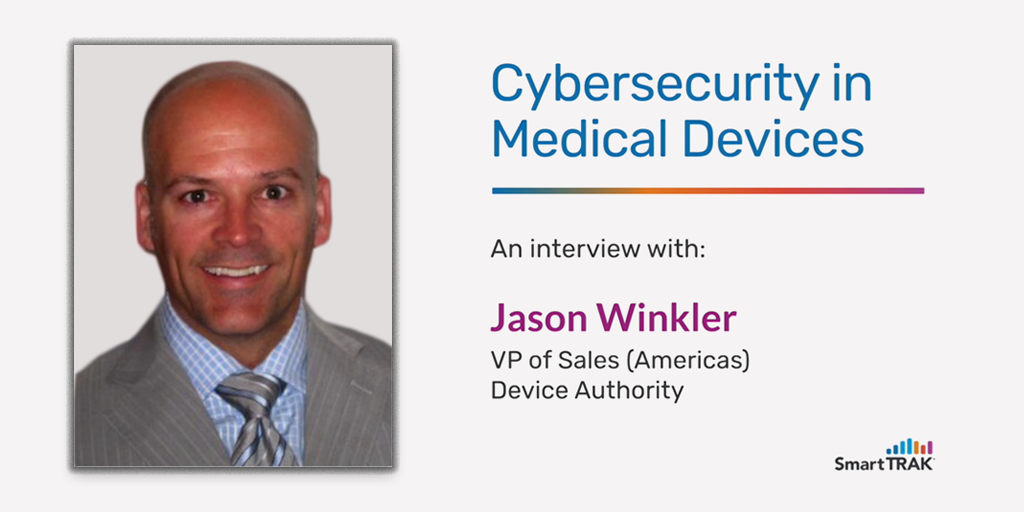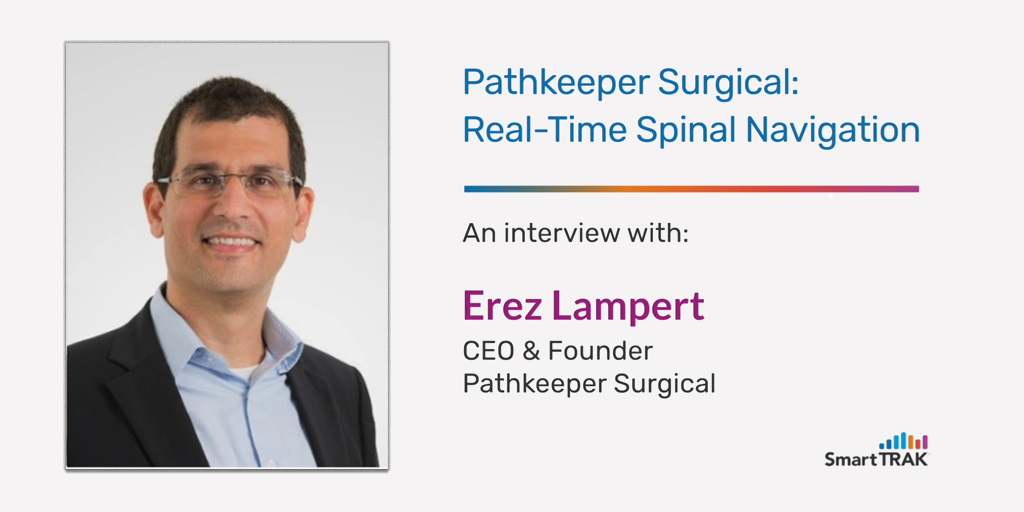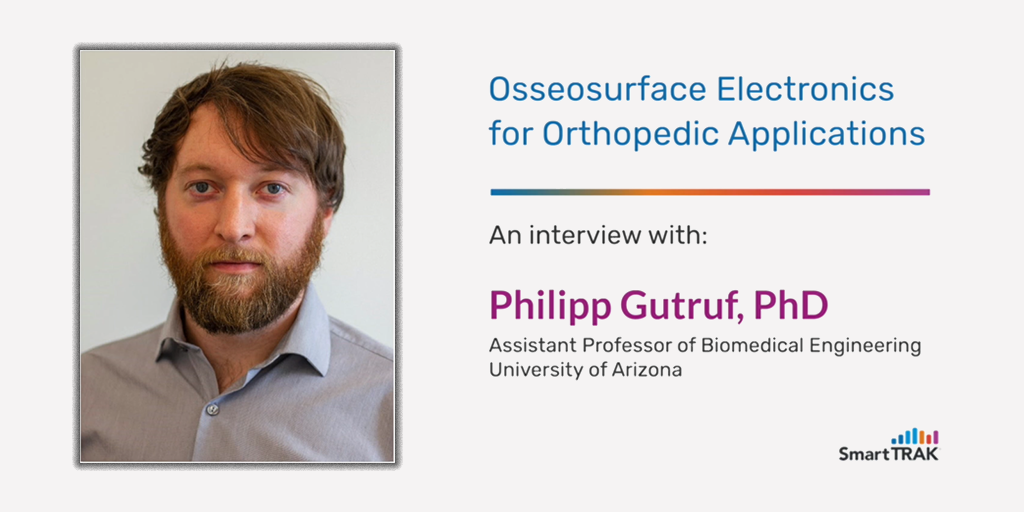 Jason Winkler, Sales VP of cybersecurity startup Device Authority, discusses the state of cybersecurity in healthcare in an interview with SmartTRAK.
Jason Winkler, Sales VP of cybersecurity startup Device Authority, discusses the state of cybersecurity in healthcare in an interview with SmartTRAK.
To find out more, including the devices most vulnerable to cybersecurity threats and how medical device manufacturers should think about designing cybersecurity measures into their connected products, click on the following video to listen to the full interview (17:29 min). A link to download the complete transcript of the interview is also provided below.
SmartTRAK: Hello everyone. This is Nick with SmartTRAK. I'm here with Jason Winkler, VP of Sales for the Americas for Device Authority, a cybersecurity startup that deals with medical device security among other things. I'm excited for the interview and to enlighten a few of our customers and clients about cybersecurity medical devices.
Jason Winkler: Thanks for the invite. Looking forward to chatting with you today.
So can we start off by you explaining what IoT, and more specifically, what IoMT is and what that means?
JW: Yeah. Most people think of IoT as the internet of things and they think about probably the consumer aspects of IoT like smart connected home devices. So whether it's lights that are connected to your wifi network to an app on your phone that you can control the intensity and so forth, or whether it's your smart garage door opener, your smart locks on your front door. So I think most people approach it from a consumer aspect and understand IoT as being those smart connected devices in and around the home or the business, but it's obviously a lot larger than that. You've got IIoT when you talk about industrial if you had a factory and you got smart sensors, and you got data being aggregated from the edge all the way back to the enterprise.
And so more specifically when you're talking about IoMT, the internet of medical things, what it's referring to is the network of internet-connected medical devices, hardware infrastructure, and software applications that are used to connect healthcare information technology. So to be more specific, it could be something as simple as a patient monitoring device that's then sending data back to a prescriber or a physician healthcare practitioner that's then integrated that data back from the patient monitoring device into, let's say, their electronic medical record, to be specific. Or it could be something a little bit larger, like a connected surgical robot in the OR that's not just sending back to this real-time monitoring and data to analyze how well is the robot performing, and are there any error codes and things of that nature, all the way down to the more specific information in terms of the video feeds that upload to an EMR system and so forth. Hopefully, that gives you a 30,000-foot view of IoT and IoMT in its simplest terms.
Yeah. I think that IoMT is fairly a new abbreviation within the medical device world. And I think it's been coined maybe in the last 10 to 15 years and we'll definitely be hearing more about it with all these connected devices, especially robotics, which is maybe the number one trend in healthcare right now. So can you give us a little introduction to the state of cybersecurity in healthcare and specifically, medical devices right now?
JW: It really is in a current state of constant change, right? Death, taxes, and change are the only three constants in life and so probably more so with all the innovation going on within healthcare and specifically the medical device and medtech space. Connected devices are coming online by the thousands, if not tens of thousands in a given year. And probably more so in 2022 and 2023, I think 50% of the identity access, in terms of new users on enterprises, are these headless devices, right? And so it's probably more market share now of these connected devices than individual users that are coming onto a corporate network. So it is in constant change. I think that cybersecurity has to be thought about from the beginning, from the OEM design process, from a secure element all the way through the life cycle, not really as an afterthought. But the problem is, is that we've got tens, if not hundreds, of thousands of these brownfield devices that are out in the field that are connected that may not have the best security posturing, because it was thought about after the fact, right? ...
To download the complete transcript of the "The State of Cybersecurity in Healthcare" interview with Jason Winkler, just click the button below.
SmartTRAK is the leading source of competitive intelligence used by the top ten global orthopedic & wound care companies. If you would like a demo of what SmartTRAK has to offer and see how we can help increase proficiency, improve productivity and reduce costs for your company, just click the button below.






